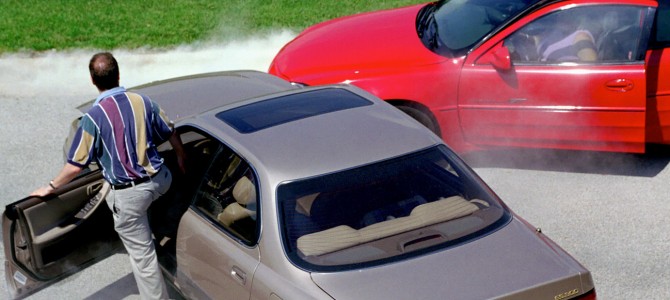Some readers of my recent piece on Ezra Klein’s misleading explanation of the “individual mandates” were surprised that, despite being mandated, 14 percent of drivers are uninsured.
This really should not be surprising. I wrote about this for the National Center for Policy Analysis in 2006 At the time, I wrote:
- All but three states mandate automobile insurance, but 14.6 percent of America’s drivers remained uninsured in 2004, according to the Insurance Research Council.
- No state mandates health insurance, but 17.2 percent of the population lacked health coverage in 2004, according to the Employee Benefit Research Institute.
- In 17 states, the uninsured rate for auto is higher than for health.
What is remarkable about finding is this: considering that driving is a voluntary activity and enforcement is relatively easy – making people show proof of insurance when they register their cars. Further, auto coverage is relatively inexpensive, especially since the only part of the coverage mandated in most states is the damage you might do to other people and their property. You are not required to insure for the damage you do to yourself or your own car.
This, despite the fact that the penalties for non-compliance can be severe:
- In Kentucky an uninsured motorist can be fined $1,000 and 6 months in jail; Wyoming also has a 6 month jail term and a $750 fine.
- In Louisiana, the driver’s car can be impounded for failure to insure.
- Yet the rate of noncompliance is 12 percent in Kentucky, 11 percent in Wyoming and 10 percent in Louisiana.
About this time I did a comparison of the rate of non-insurance for auto versus health in sixteen states where mandatory auto insurance resulted in higher rates of non-compliance than for health, which was voluntary.
Rate of Non-Insurance, Auto versus Health, by state, 2004
| State | Auto | Health |
| AL | 25.0 | 16.3 |
| AZ | 22.0 | 19.7 |
| CA | 25.0 | 21.6 |
| DC | 21.0 | 11.5 |
| DE | 12.0 | 11.5 |
| HI | 13.0 | 11.5 |
| IA | 12.0 | 10.9 |
| IL | 16.0 | 15.9 |
| IN | 16.0 | 14.7 |
| KS | 13.0 | 12.7 |
| MI | 17.0 | 12.4 |
| MN | 10.0 | 9.1 |
| MS | 26.0 | 19.2 |
| OH | 15.0 | 13.3 |
| RI | 14.0 | 10.7 |
| WA | 18.0 | 16.0 |
Table: The state-by-state breakdown of uninsured motorists is from, “Uninsured Motorists: 2006 Edition,” Insurance Research Council, 718 Providence Rd. Malvern, PA, 19355. The state-by-state breakdown of the population uninsured for health care is from, “Sources of Health Insurance and Characteristics of the Uninsured: Analysis of the March 2004 Current Population Survey,” by Paul Fronstin, Employee Benefit Research Institute, December, 2004.
More recently the Wall Street Journal weighed in with some updated numbers. This article noted that uninsured motorists don’t just hurt themselves, they can inflict enormous damage on other people. It cites one story from Oklahoma that resulted in $500,000 in medical bills to an innocent couple “when a driver plowed through a stop sign and crashed into the Jeep in which they were riding, sending them both to the hospital with serious injuries.”
It reports that state efforts to beef-up penalties have had little effect on the problem:

Look, it is a fantasy that a group of legislators in Washington, DC or Albany New York can wave their magic wands and make everybody do what they want. A few years ago, I gave a speech to a group of state legislators in Albany shortly after New York enacted a new law prohibiting the use of hand-held cell phones while driving. In the taxi going from the airport to the venue I noticed that every single car on the highway was violating the 55 MPH speed limit, without exception, and at least a third of the drivers were chatting merrily on their hand-held phones.
NONE OF THIS EVER WORKS!
There is always a significant portion of the population in the United States that is indifferent to these laws or too dysfunctional to obey them. That may not be the case in Europe, but it sure the hell is here.
Legislators may make themselves feel good by enacting such a mandate – “We have taken decisive action to fix this terrible problem!” – but passing a law that will widely be ignored does no one any good. In fact, it diminishes respect for laws generally. Legislators would be better off simply passing a resolution – “In the opinion of this body, no one should ever do X, Y, or Z!”









